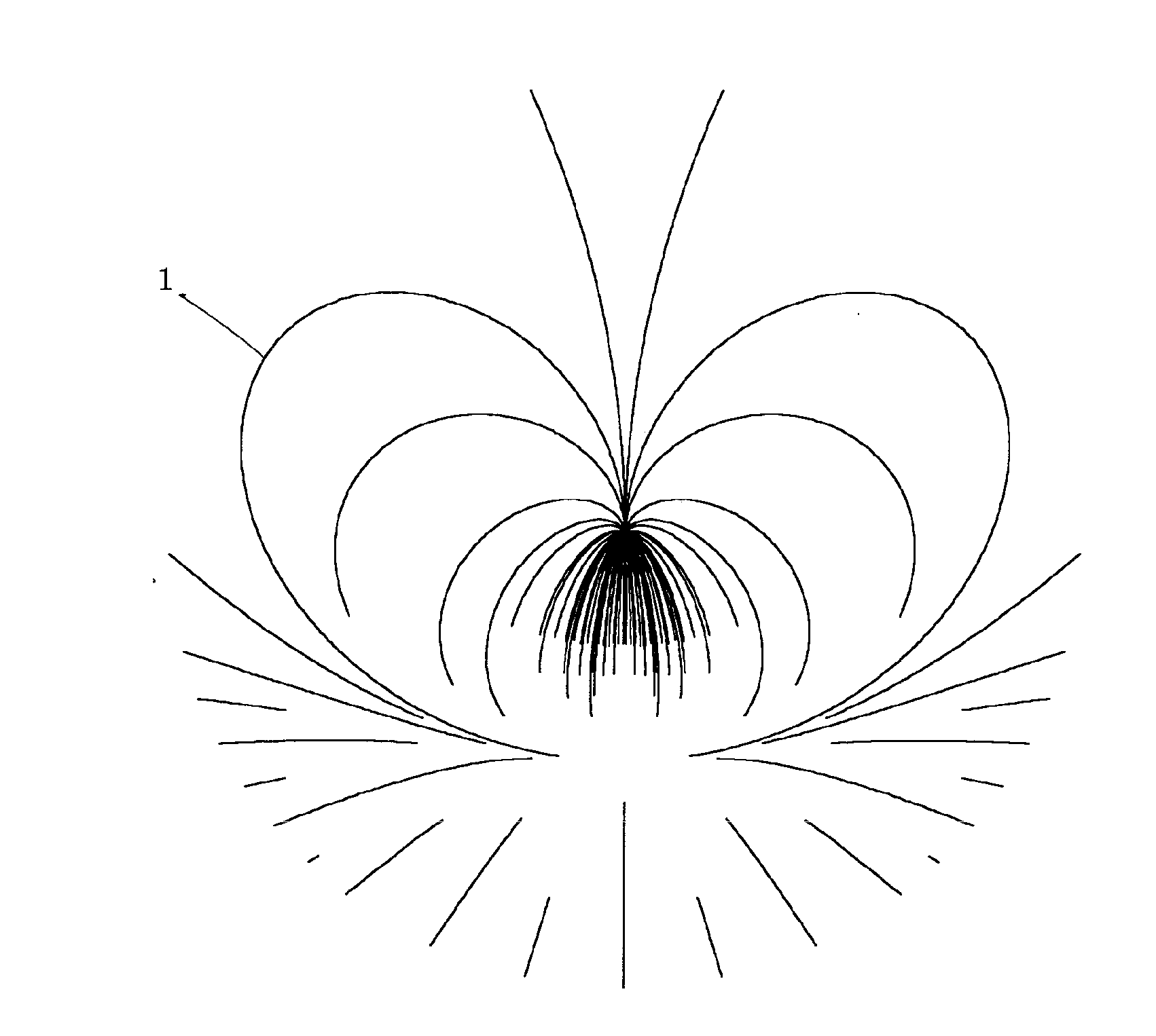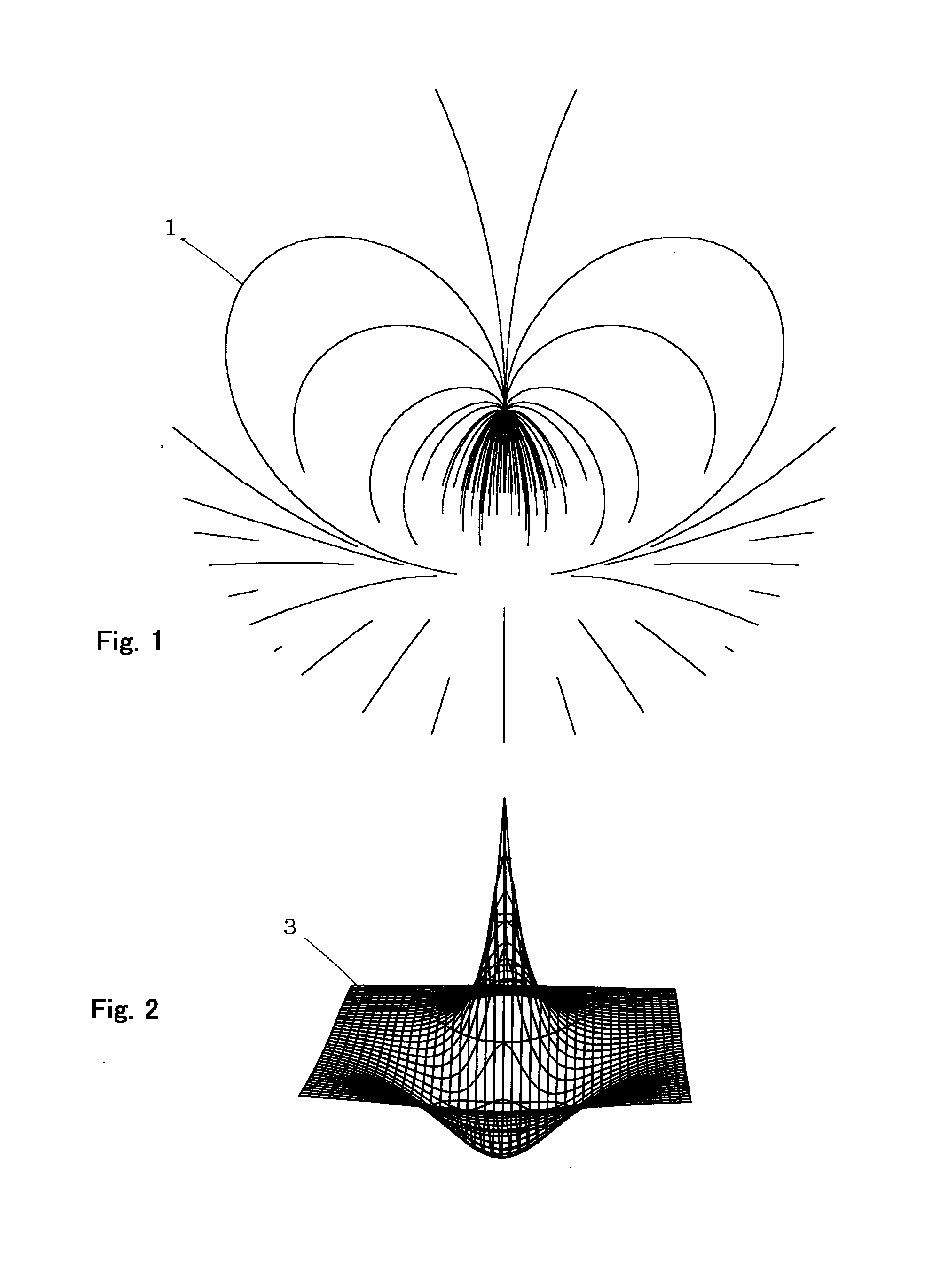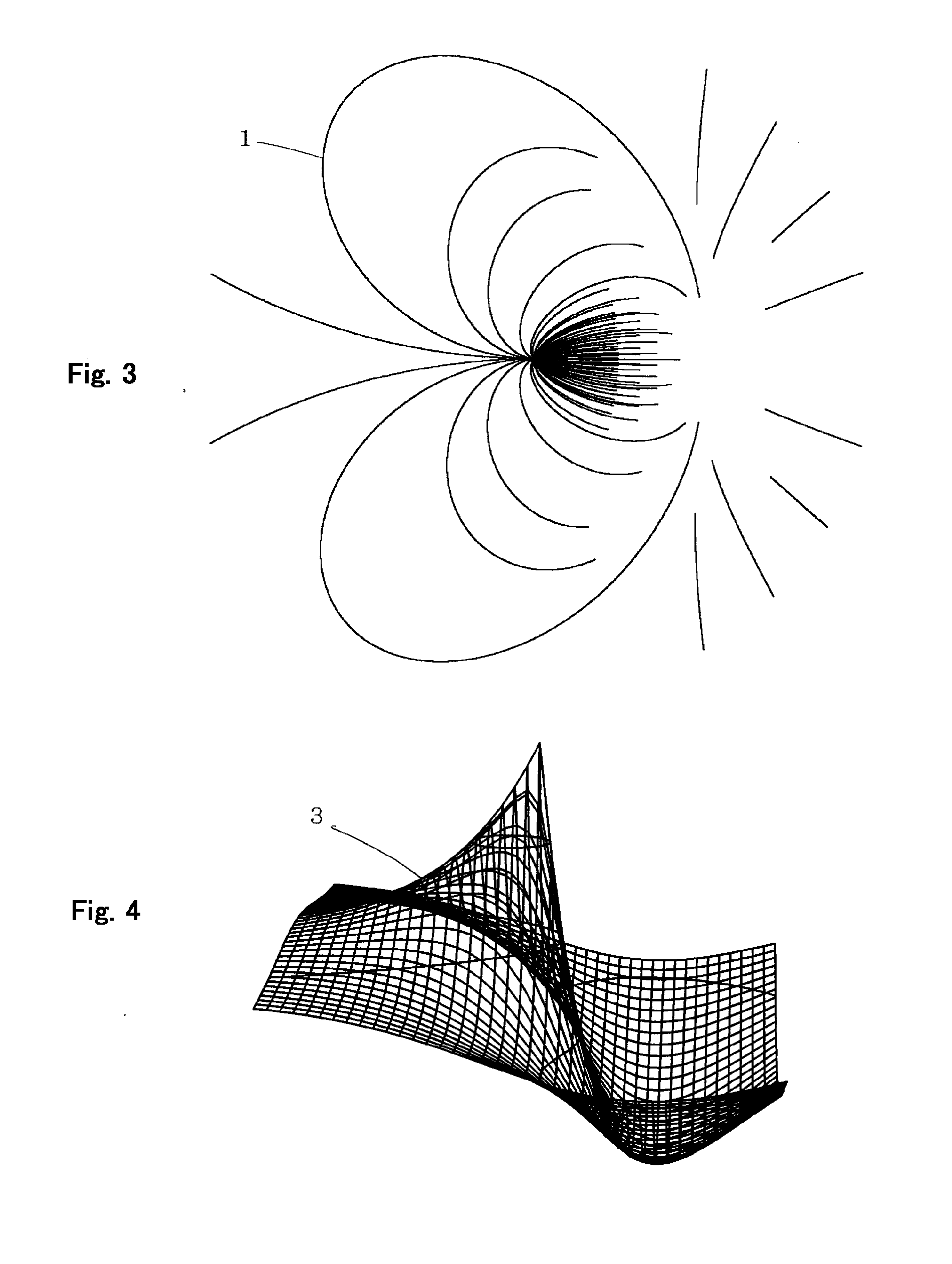Method of displaying electromagnetic field in hydrogen atom
a hydrogen atom and electromagnetic field technology, applied in educational appliances, instruments, educational models, etc., can solve the problems of inappropriate magnetic field, infinite divergence at r=0,
- Summary
- Abstract
- Description
- Claims
- Application Information
AI Technical Summary
Benefits of technology
Problems solved by technology
Method used
Image
Examples
example 1
[0031]FIG. 1 is a vertical cross-sectional view showing distribution of electric lines of force 1 of a 2pz orbital in a range of a radius 6a0 obtained by use of electromagnetic field display method for a hydrogen atom as an educational tool according to the first embodiment of the present invention. A following formula is obtained by applying a gradient vector operation and a sign inversion to the wave function Ψ2pz of a 2pz orbital shown in Formula 4.
E=-grad{u200(r,θ,φ)+u210(r,θ,φ)}={(2-cosθ-r / 2a0+rcosθ / 2a0)ir+sinθiθ}exp(-r / 2a0) / 2a0(9)
[0032]Electric lines of force 1 are drawn by applying a method similar to that disclosed in Patent Document 2 to the result shown in Formula 9. The number of the electric lines of force 1 is made proportional to the percentage of a difference between the maximum and minimum values of the wave function Ψ2pz given by Formula 4, and around 100 lines in total. Since FIG. 1 shows a complicated pattern, and the method of making the electric lines of force 1...
example 21
[0033]FIG. 2 is a contour drawing showing an electric potential 3 of a 2pz orbital obtained by use of an electromagnetic field display method for a hydrogen atom as an educational tool according to the third embodiment of the present invention. Spreadsheet software Excel provided by Microsoft (trademark) was used. Formula 4 representing a wave function of a 2pz orbital was substituted with r=(z2+x2)1 / 2 and r cos θ=z. A row of the matrix of the spreadsheet were filled with z and a column with x in a range from −10a0 to +10a0. Each cell as an intersection was filled with (1−r / 2−r cos θ / 2)exp(−r / 2). A contour diagram was drawn for the whole area, and scale marks, references and the like were deleted. The diagram, although being drawn under the condition that y=0 for convenience, shows an electric potential 3 on a vertical cross-section at any of φ. FIG. 2 is placed under FIG. 1 with its center accorded with that of FIG. 1 in horizontal position.
example 31
[0034]FIG. 3 is a vertical cross-sectional view showing the distribution of electric lines of force 1 of a 2px orbital obtained by an electromagnetic field display method for a hydrogen atom as an educational tool according to the first embodiment of the present invention. FIG. 3 is drawn in the same range of a radius 6a0 and in the same scale as FIG. 1. A gradient vector operation and a sign inversion were applied to the wave function Ψ2px of a 2px orbital given by Formula 7. An electric field on a vertical cross-section where φ=0 and φ=π is given as follows.
E=-grad{u200(r,θ,φ)+u211(r,θ,φ)}={(2-r / 2a0+sinθ-rsinθ / 2a0)ir+cosθiθ}exp(-r / 2a0)(10)
[0035]In the same manner as FIG. 1, the electric lines of force 1 almost proportional in number to the percentage of a difference between the maximum and minimum values of the wave function Ψ2px of a 2px orbital are drawn.
PUM
 Login to View More
Login to View More Abstract
Description
Claims
Application Information
 Login to View More
Login to View More - R&D
- Intellectual Property
- Life Sciences
- Materials
- Tech Scout
- Unparalleled Data Quality
- Higher Quality Content
- 60% Fewer Hallucinations
Browse by: Latest US Patents, China's latest patents, Technical Efficacy Thesaurus, Application Domain, Technology Topic, Popular Technical Reports.
© 2025 PatSnap. All rights reserved.Legal|Privacy policy|Modern Slavery Act Transparency Statement|Sitemap|About US| Contact US: help@patsnap.com



